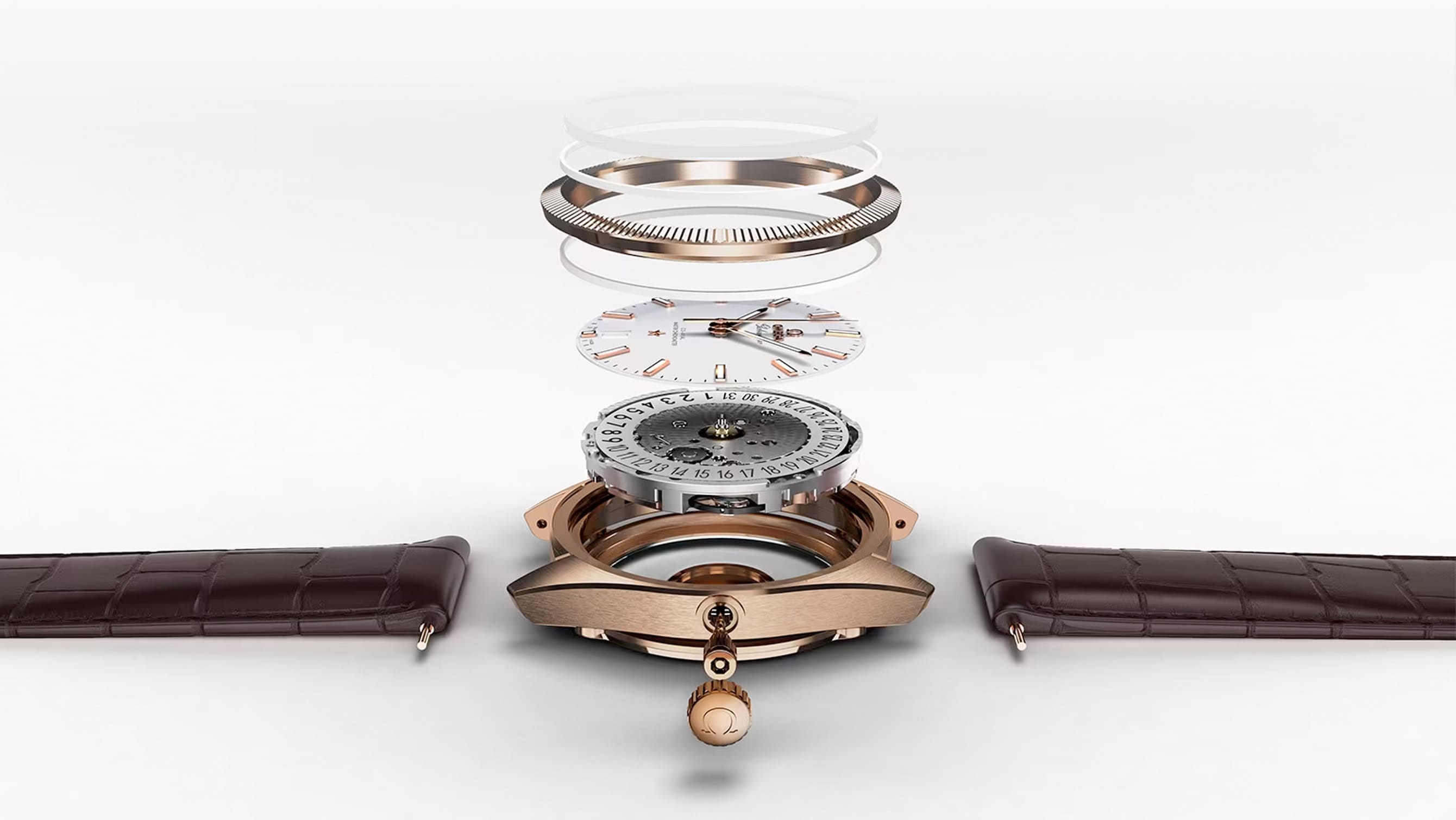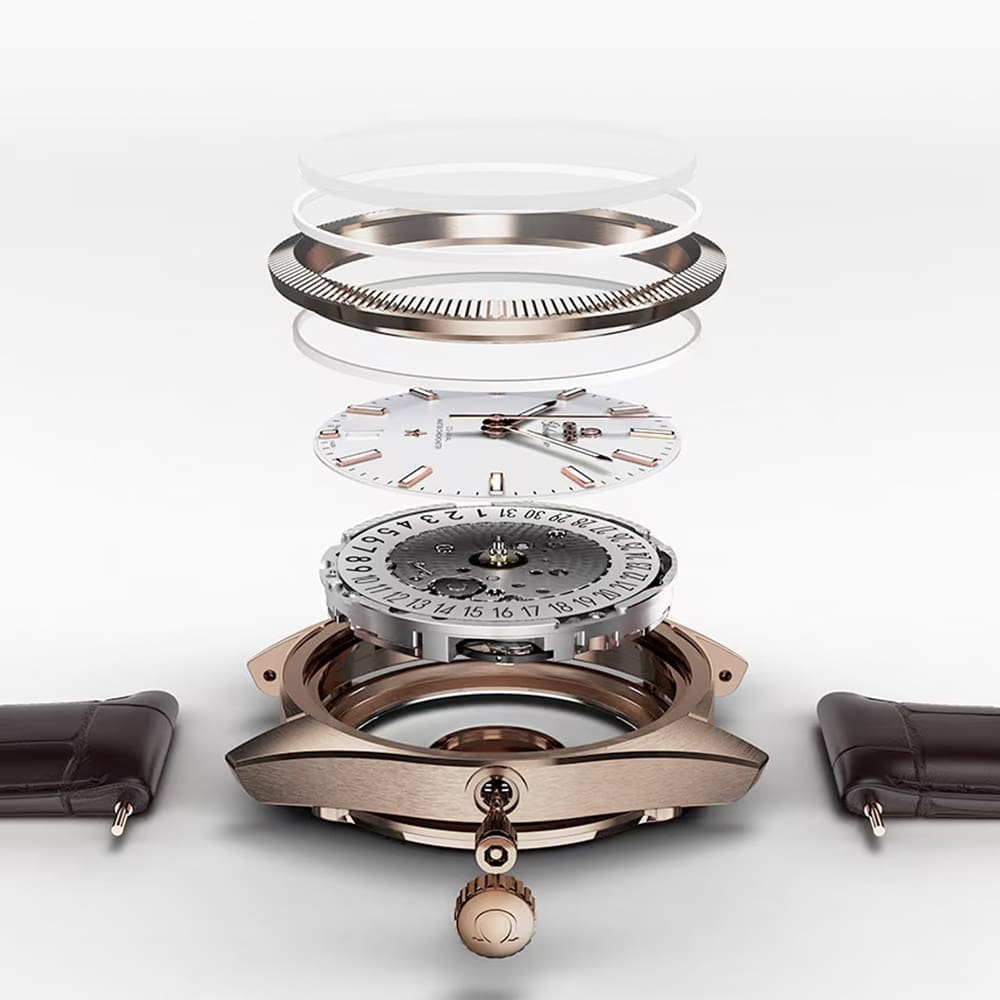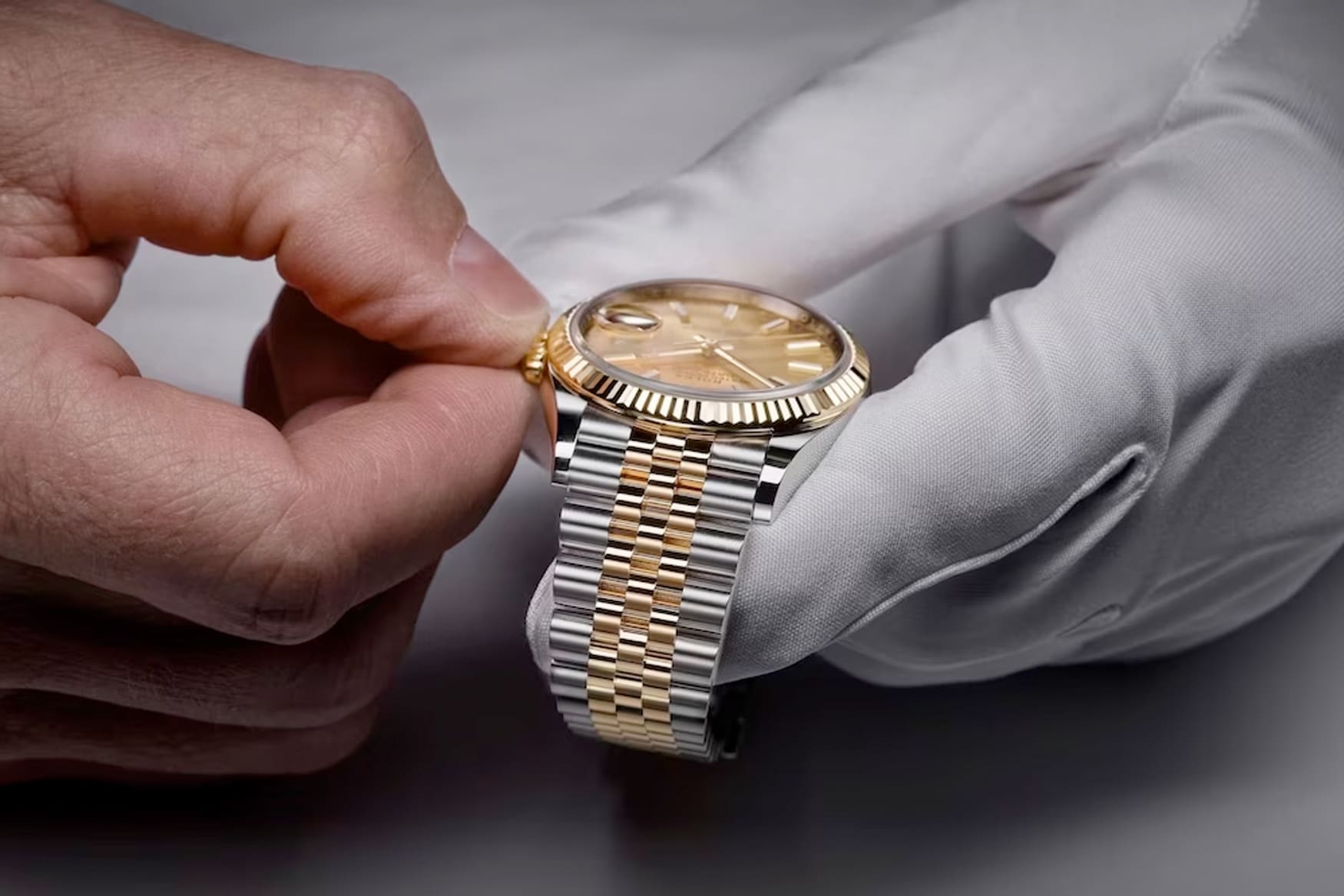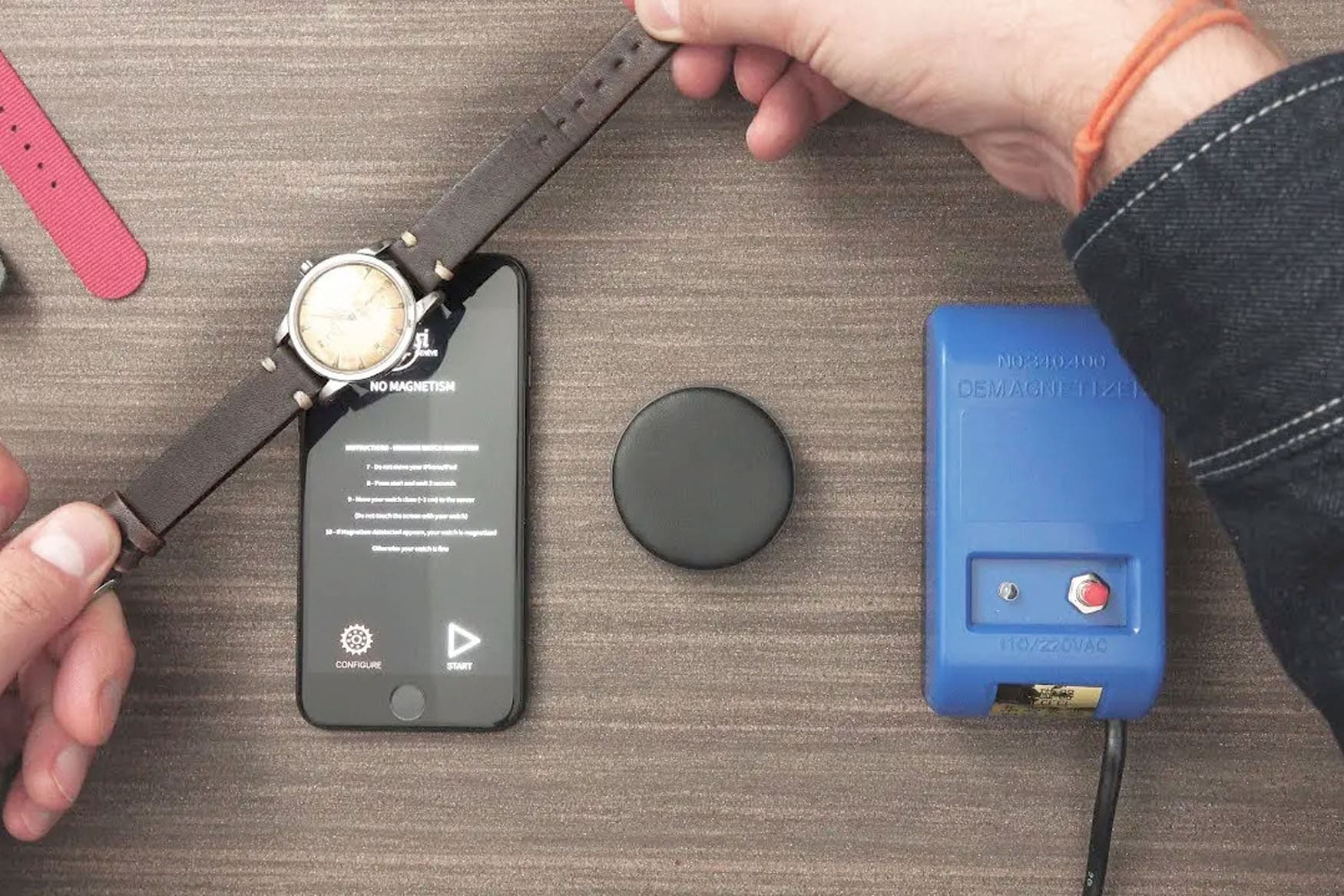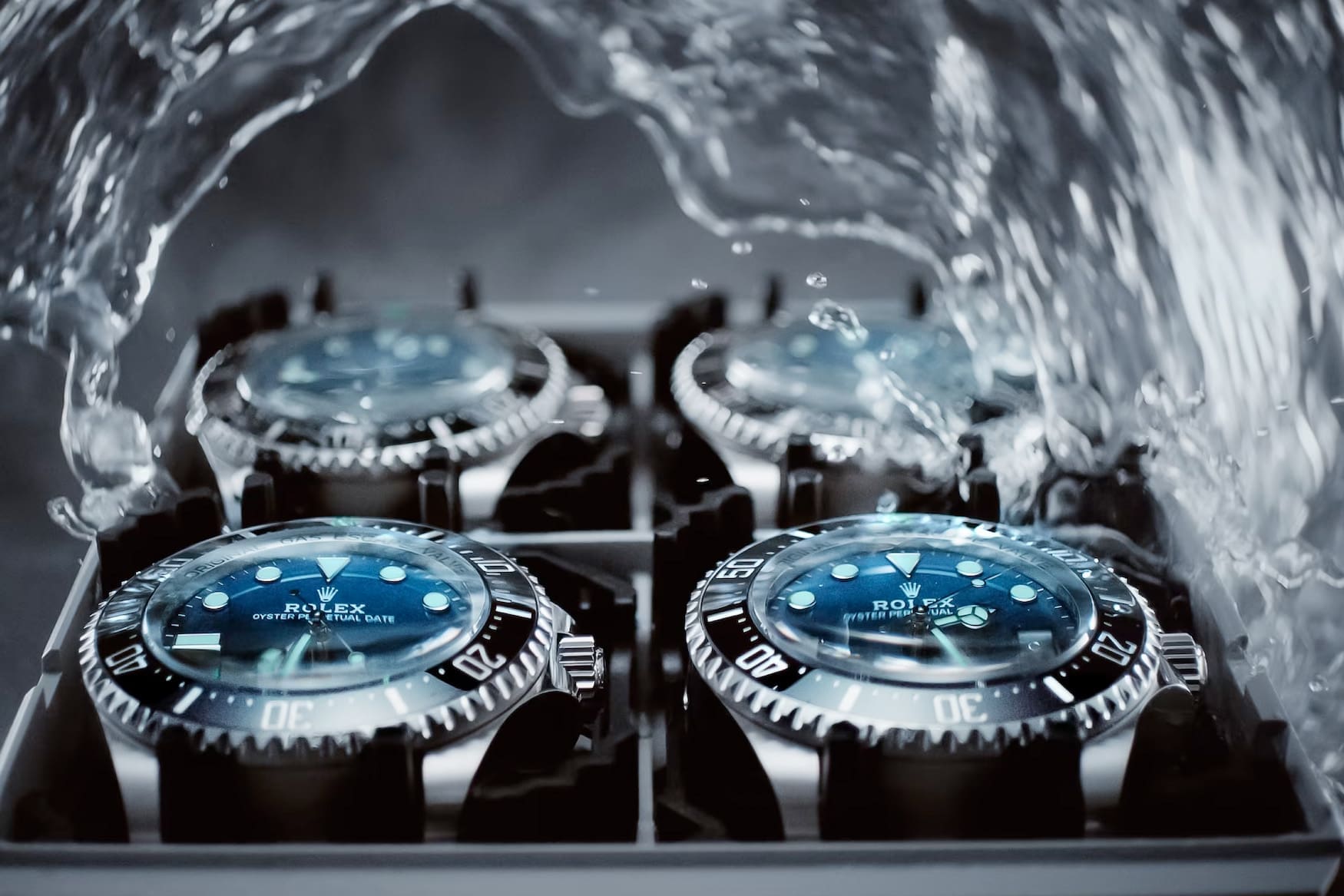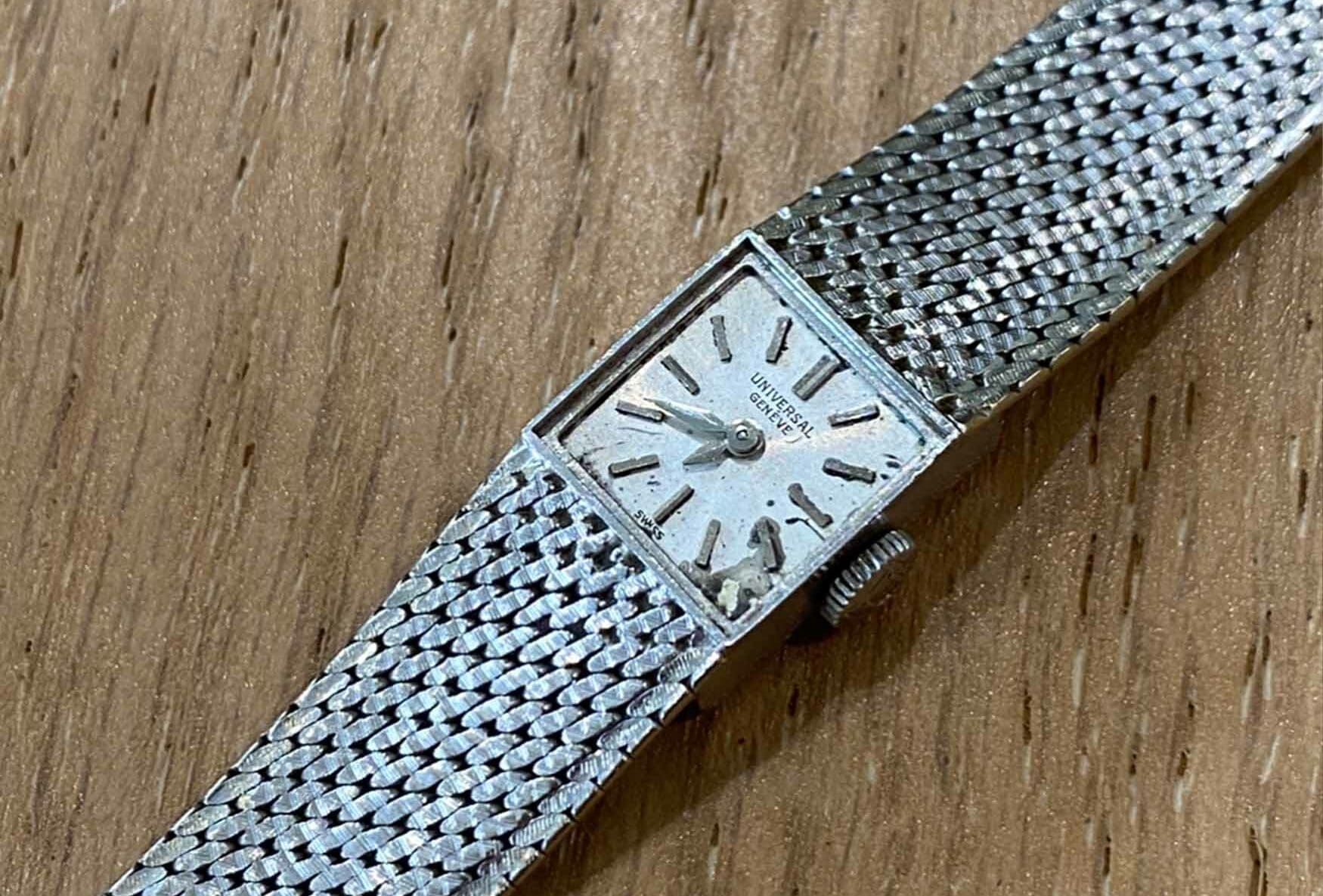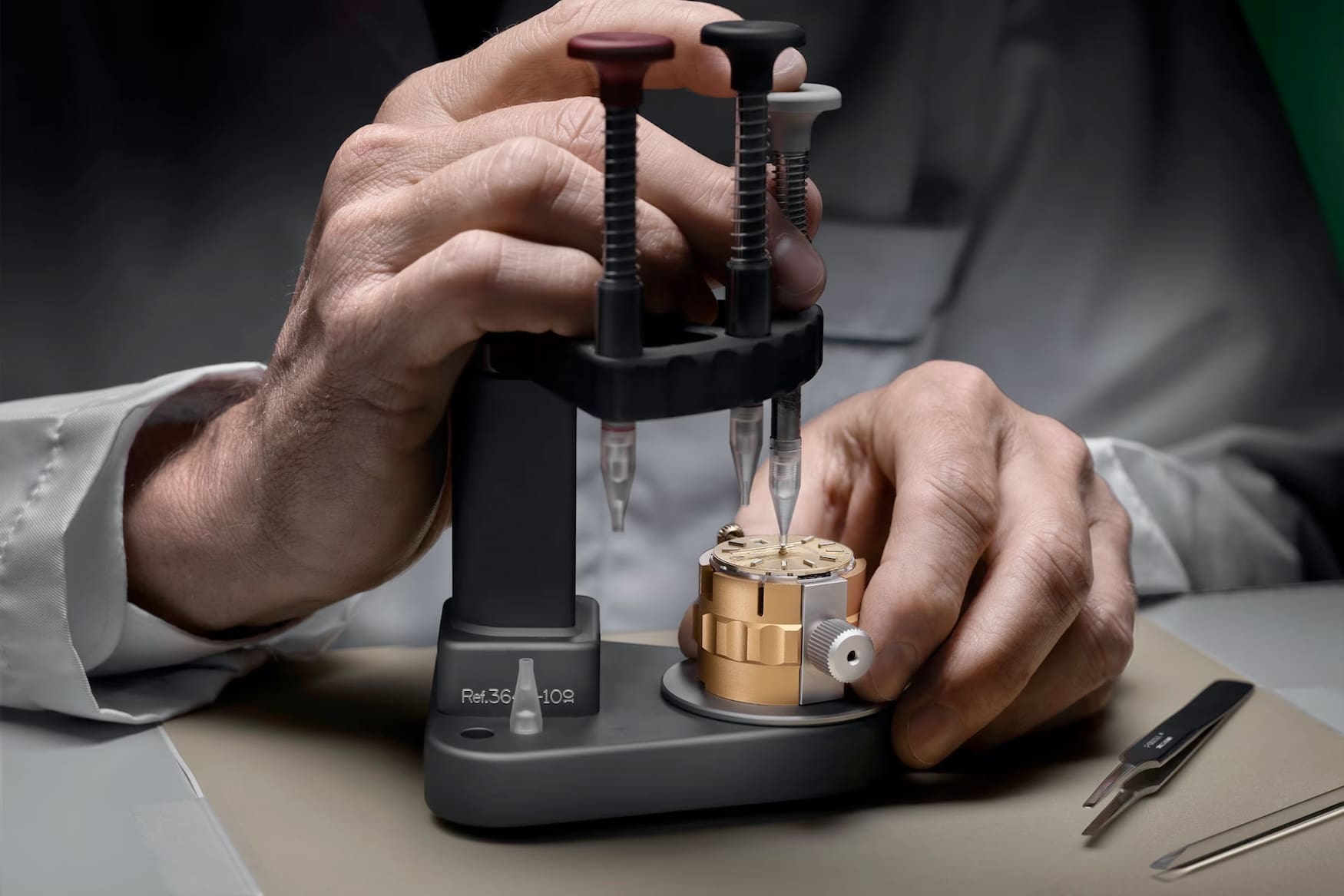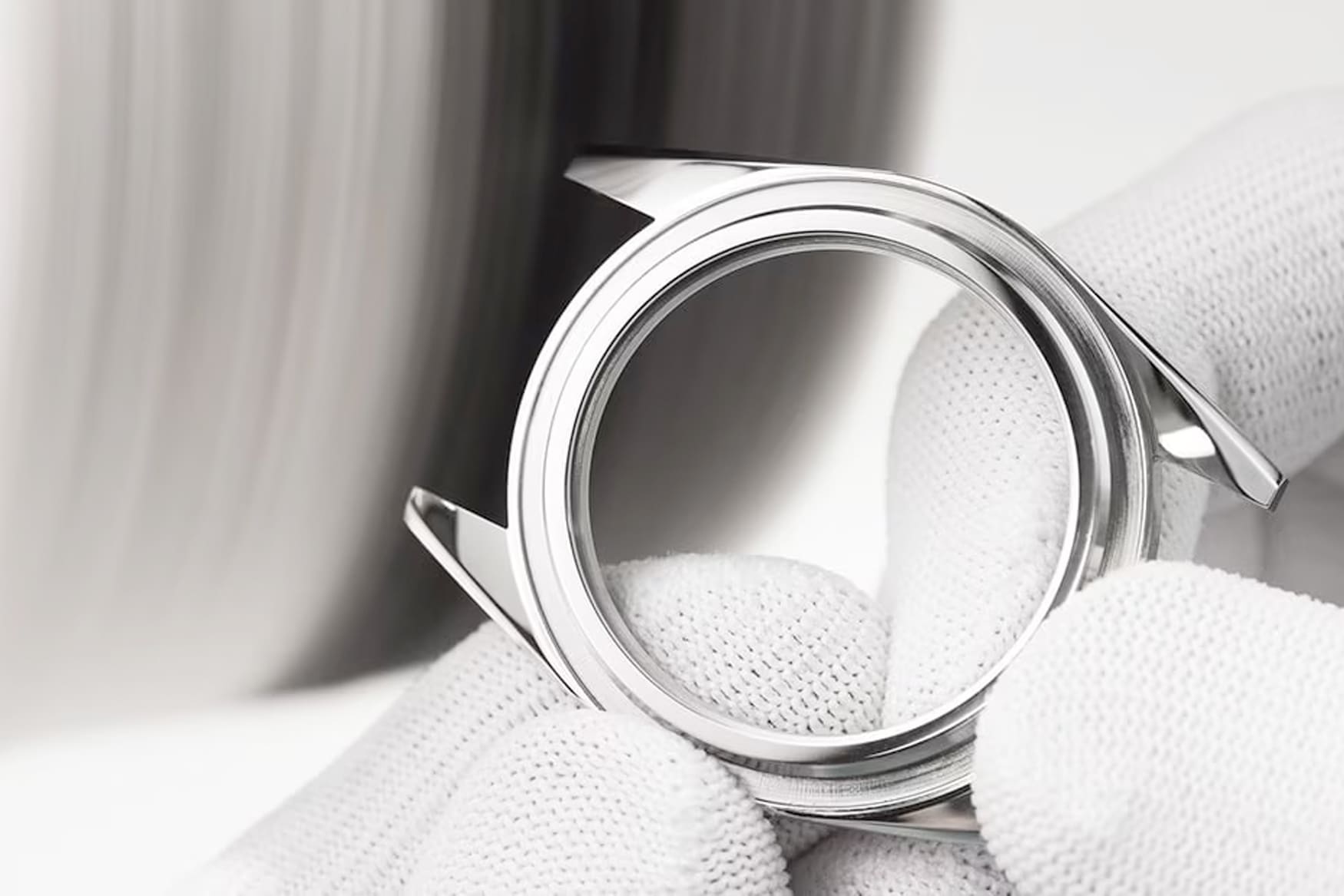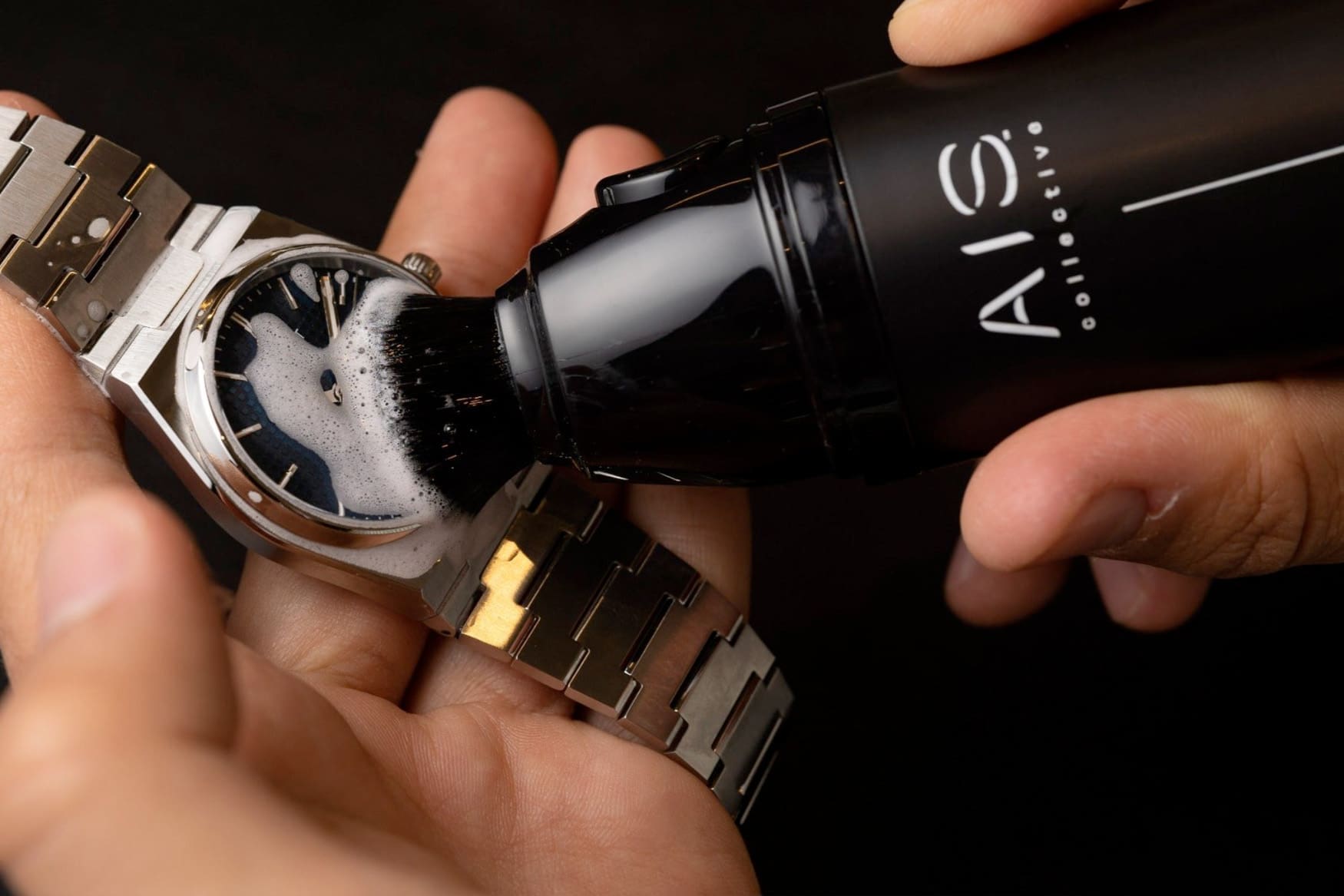How to look after your mechanical watch
Tom AustinOwning a mechanical watch is a wonderfully analogue experience in a world where everything has become digital. Part of the charm of a mechanical watch movement is understanding that the technology inside, even the latest watches, can date back centuries. For the most part, mechanical watches are sturdy, tiny machines, however, much like a finely tuned engine in a car, they do require some care and attention. Neglect it over time, and you’ll pay the price when something doesn’t manage to hold up. Here’s a good starting point to help you keep your watches in top condition and ticking on forever.
Regular winding or wearing
We often comment about how important it is to “Wear your watches!”, and we know that sometimes, we all probably get a bit too precious with them. But in reality, it’s probably one of the most important pieces of advice. Mechanical watch movements are generally powered by a mainspring, which is either wound up manually via the crown or by an oscillating weight if the watch is automatic. Wearing the watch allows this mechanism to move freely, and for the mainspring to release its tension, which is important for its longevity and accuracy. So, ensuring your mechanical watch is regularly wound or worn is key. Additionally, allowing a movement to remain stationary for long periods can sometimes dry out any oils and lubricants, which could cause some issues later on.
It’s a common question as to whether you should keep a chronograph movement running or not, and the truth is, it doesn’t really matter too much either way. Leaving a chronograph running constantly will eventually put excess wear on components; however, not running it could, as above, let lubricants and oils run dry and cause other issues down the line. It’s a complication that is designed to be used, so use it every now and again, because why not? Another common question is related to watch winders and whether you need one or not. Again, the truth is it comes down to how much you wear the watch. If it’s a perpetual calendar, it’s imperative that you keep it on a winder once it’s set should you wish to avoid the often tricky task of resetting it. However, most other watches can afford to stop for a while; it won’t hurt as long as you wind it every now and again.
Avoiding magnets
Think of magnets as a mechanical watches’ kryptonite. Much like the bright green crystals’ effect on Superman, magnets can cause havoc with your mechanical watch’s timekeeping. One of the most vulnerable components in most mechanical movements is the balance spring. It’s the part that compresses and expands several times a second to regulate the movement’s constant ticking. In order to do this, it needs to be small and delicate, often around only 0.03mm thick. This can pose a problem. If your watch’s balance spring is not completely anti-magnetic, the spring can, in fact, stick to itself if it’s exposed to magnetic fields. This will, in turn, affect its ability to regulate properly, and before you know it, your watch can no longer keep the time properly. In a worst-case scenario, steel components inside a watch can become so magnetised they create their own magnetic fields, making the problem even worse.
If you’ve noticed your watch isn’t quite running as it should be, it stands a good chance that a magnet is the culprit. Frustratingly, these days we’re surrounded by mechanical fields, and it’s even suggested that things like laptop speakers and even your phone can create a problem. However, a lot of modern watches are far less affected, thanks to the use of anti-magnetic alloys or silicon to manufacture these tiny springs. That doesn’t mean you shouldn’t be careful; however, you can still face issues if you are complacent. Thankfully, it doesn’t cause permanent damage, and a good watchmaker can correct these problems for you should you run into them.
Water resistance awareness
Firstly, we should clear something up. Despite what you may have heard, no watch is truly waterproof. The term waterproof suggests that under no circumstances will the watch case suffer any water ingress, and this simply isn’t true. For decades, watch manufacturers have pushed the limits on how to seal their watches from the elements, but naturally, everything has a limit. This is where water resistance ratings come in. If a watch is rated to a water resistance of 30 metres, this likely means it’s been tested for 3 ATM of pressure, which is roughly equivalent to that depth.
Usually, as an absolute minimum, any modern, recently serviced watch with a 30-metre water resistance rating should be fine in the rain or washing your hands, but it’s probably not advised to keep it submerged for a prolonged length of time. But what about that wallet-bustingly expensive dive watch you recently got? Surely this is fine? Well, yes, provided you have the all-important crown (and pushers) screwed in, of course. It’s important to remember that if you’re winding your watch, you must ensure the crown is wound down tightly afterwards. Thankfully, brands such as Rolex have a double seal system on their dive watches, which does offer some basic protection should you happen to get it slightly wet with the crown out, but don’t take the risk. Damage usually results in a costly repair.
Protecting from shocks and impacts
Mechanical watches are, of course, precision instruments, and they can be sensitive to shocks and impacts. Try to avoid dropping or subjecting your watch to sudden jolts if you can, once again being especially careful with vintage ones due to their sub-par or completely lacking shock protection. If you play sports or engage in activities with a risk of impact, consider removing your watch.
There are some watches out there specifically designed to withstand impacts, such as the Ball Engineer Hydrocarbon EOD. Many watches have some form of shock resistance built into the escapements, but generally speaking, try to limit knocks and bangs where possible. Alternatively, if you want to smash your watch around, get yourself a G-Shock or Toto Wolff’s A$122k IWC Big Pilot Shock Absorber.
Regular servicing
Imagine you ran your car for 100,000 kilometres without changing the oil, spark plugs or even having anyone take as much as a look at it. It stands a chance that it’s going to be in a bit of a state. A mechanical watch movement is, in many ways, similar to an engine. They are made up of precision-manufactured parts designed to operate within certain tolerances, and these components spend their lives subject to constant rotational forces and, importantly, friction.
Friction is essentially what keeps them running, but it also creates wear on surfaces, which, over time, can cause problems with accuracy and overall running. Getting your watch serviced within brand-communicated intervals isn’t going to guarantee perfect running, but it’s a much safer bet than hoping your old Seiko will just keep ticking even after you haven’t touched it for 20 years. If you’ve worn your watch every day for more than five years and it’s losing or gaining time here and there, it may be worth getting it checked out. Like a car, if you end up leaving it too long, often it becomes a much more expensive problem in the future.
Proper storage
Perhaps you have a large collection which you lovingly care for, and if so, this probably doesn’t apply to you. If you keep your mechanical watches stuffed in a drawer or on the windowsill, then you should probably read on. Firstly, make sure the place you store your watches is cool and dry. If you’ve not adhered to getting them regularly serviced, the seals may not be up to the job, and a steamy bathroom shelf or moist windowsill aren’t the greatest protectors against corrosion or particle ingress. Also, keep it out of direct sunlight, as increasing temperatures can cause problems with the seals and lubricants inside – unless you want to force the patina on your aluminium bezel. But don’t do that.
Consider picking up a sexy watch roll or case for peace of mind. Alternatively, why not invest in a watch stand? Many options are on the market now, and they’re a great place to keep your watch by your bedside.
To polish, or not to polish
That is the question. There are many people out there who will tell you not to care about the scratches, that it’s all part of the watch story, and you should embrace them. But I get it; sometimes, there’s nothing worse than that heart-sinking feeling when you scrape your polished centre links on the top of the coffee machine, filling it up first thing in the morning with bleary eyes. Don’t ask me how I know.
There’s nothing whimsical about that; no one is going to care about the story of how you smacked it on a door handle, likely not even yourself. However, there are instances where you might feel like you want to keep a scratch. These are mostly really personal, and it’s definitely down to the individual. The fact is, your watch is going to work with or without the scratch. Unless it’s been dragged down the tarmac at 150mph, there’s a chance nobody is going to notice it. But if it bothers you – get it buffed out. You have to do what you have to do to allow you to carry on enjoying the watch, and nobody on the internet is going to be able to answer that other than yourself.
I will add however, that often watches do indeed carry a lot of charm when they show the passing of time. There’s something interesting about picking up a vintage watch with all manner of marks and dings, and you imagine who made them and how. Sometimes, you might even know very well who made them, and that can make those marks even more special to you. If you are going to get a vintage or neo-vintage watch polished, though, make sure you get it done by a professional who comes recommended. Bad polish jobs can sometimes ruin a watch’s overall appeal, and potential resale value down the road, in case you’re not sure whether it’s a keeper or not.
Keeping your watch clean
If you stick to rule no.1 and wear your watches regularly, regardless of what you try to do, your watch will get dirty. The dreaded wrist-gunk tends to build up everywhere: inside the bracelet, between the lugs, on the caseback… Most of the time, you don’t notice it too much, but the build-up can get out of control if you don’t pay attention. Make sure not to use any aggressive chemicals, first and foremost. This can affect finishes and can destroy rubber seals. If you don’t have an ultrasonic bath to hand, you’ll need a simple kit such as the AIS Collective ChronoPen Watch Cleaning Kit. It comprises a specially developed cleaning solution with an extra-fine brush head built into the bottle. This allows for one-handed cleaning to ensure you can hold onto your watch properly while gently cleaning off any dirt without harming anything. Rinse off with water (screw-down that crown!) and simply dry with the polishing towel provided. Keeping on top of this makes sure your watch keeps its lustre and keeps it hygienic, too.




